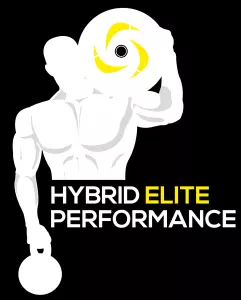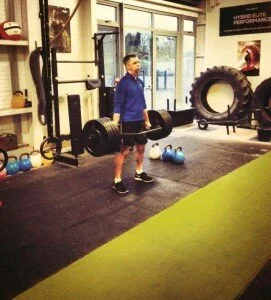Unleashing your Hulk Smashing Ability!
David Handcock, Head S&C Coach for Rugby League Ireland and owner of Hybrid Elite Performance, is here to talk to us about becoming a hulk.
Following on the previous article Programming the Novice Power Athlete, I mentioned Complex Training. In this article, I will delve deeper in to this awesome form of power development training.
Just to recap, Complex training is a combination of heavy weight training and plyometrics. Plyometrics are used in between sets or even part of the working weight training set. This allows the athlete to work muscles in such a way that their slow twitch endurance fibers behave like fast twitch explosive power fibers. It is these fast twitch fibers that are a key to a powerful athlete.
When training specifically for your sport, you must try to re-create the exact or very similar movements that are required and occur as part of your sport. The movements must be copied and applied to a working set of resistance training.
To simplify:
- Start with a working set of a heavy lift, approx. 3 – 5 reps
- Rest approx. 5 – 10 seconds and follow it with anexplosive exercise using the same movement pattern and the same number of reps
- To further simplify, if a working set calls for 4 sets of Squats, the athlete will perform Box Jumps between sets. This is a Complex Training set.
- Squat
- Followed by Squat Jumps
- Bench Press
- Followed by Prone Medicine-Ball Throws
- Pull-ups
- Followed by Medicine-Ball Slams
During the Plyometric component of Complex Training set, you must train at maximum explosive speeds for maximum results. If you want your muscles to perform at higher speeds, you must train them at higher speeds. Whatever you put into your training, you will get out. Train Slow, Perform Slow. Train Explosive, Perform Explosive. Be Specific.
When performing quick explosive movements, you must allow for minimal contact for the ground (lower body) or hand contact surface (upper body).
Lower body Plyometric exercises emphasize quick foot movements and the ability to get off the ground quickly. Upper body Plyometric exercises emphasize using medicine balls to teach the muscles to respond more quickly to external forces.
For athletes, complex training builds both strength and power simultaneously. The key to complex training is post-activation potentiation, or PAP. PAP is when the explosive capability of a muscle is enhanced after it’s been forced to perform maximal contractions.
During PAP, many essential actions occur; increased motor-unit recruitment, enhanced motor-unit synchronization and greater input to the motor neuron.
Your Central Nervous System, CNS is so stimulated that it recruits more and more motor units (muscle fibers and the activated nerves) to complete the action or movement. The more motor units recruited, the better. The results are larger, faster, and stronger contracting muscles, which in turn leads to a leaner body mass and improved athletic performance.
The greatest result of this form of training is Pure Power Enhancement and Development. When you perform an explosive movement approx. 5-10 seconds after an exercise that requires a maximum strength output, you force and subsequently teach your body to recruit more motor units for tasks like jumping, sprinting, throwing and hulk-smashing!
Metabolism is also significantly boosted by the total amount of work you do by recruiting more motor units for high-speed body-weight exercises. This offers a greater metabolic boost than you would normally get from straight sets of these exercises without PAP. This in turn improves body composition and increases lean body mass.
Go give Hybrid Elite a like!


 Facebook
Twitter
Google+
Youtube
Instagram
Email
Facebook
Twitter
Google+
Youtube
Instagram
Email

